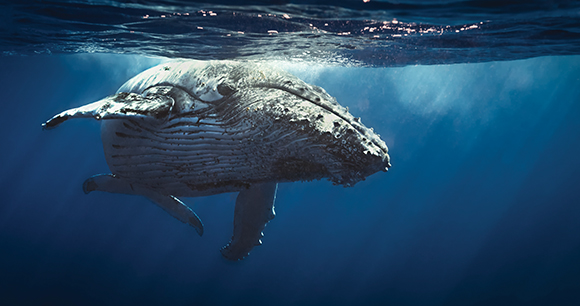by Chris Wold, Professor of Law, Lewis & Clark Law School
In March 2023, after nearly 20 years of planning and negotiations, governments of the world agreed to the final text of the High Seas Treaty (HST). The treaty establishes important rules to protect the “high seas”—the roughly 45 percent of Earth’s surface falling outside the jurisdiction of any country. Importantly, the treaty creates rules for establishing high seas marine protected areas that could safeguard unique, biodiverse seamounts, hydrothermal vents, and other habitats critical to endangered marine mammals, declining shark species, bioluminescent lanternfish, and other species. Properly designed marine reserves can substantially increase species diversity and abundance. Some vital areas, such as the Sargasso Sea and the Costa Rica Thermal Dome, have already been identified as critical to endangered and threatened animals, and designating these areas as reserves could reduce threats to them from bycatch, entanglement in fishing gear, and ship strikes.

The HST also requires participating nations to prepare environmental impact assessments (EIAs) for proposed activities under their jurisdiction that “may cause substantial pollution of or significant and harmful changes to the marine environment” of the high seas. Before authorizing such activities, a nation must determine “that it has made all reasonable efforts to ensure that the activity can be conducted in a manner consistent with the prevention of significant adverse impacts on the marine environment” of the high seas. This standard is stronger than US law, which the US Supreme Court has ruled “merely prohibits uninformed—rather than unwise—agency action.” Despite establishing a relatively strong EIA standard, the HST does not require organizations currently responsible for managing certain high seas activities—such as fishing, shipping, and deep-sea mining—to adhere to the new treaty’s EIA standards.
The treaty also requires fair and equitable sharing of benefits arising both from the use of marine genetic resources and from information obtained through sequencing of such resources. These include financial and technological benefits, as well as informational benefits, such as access to genetic samples and scientific data. To facilitate benefit sharing, the treaty establishes a freely accessible information clearinghouse concerning marine genetic resources. It also establishes a special fund supported by contributions from nations that are parties to the treaty. Through this fund, the HST can help build the capacity of developing countries to carry out activities involving high seas marine genetic resources. Sharing of financial benefits from the actual use of marine genetic resources could conceivably involve a tax of some sort imposed on the activities of private actors—future negotiations will determine the rules for these financial transfers.
The United Nations has called the HST “historic,” and that may prove true. First, however, the treaty must be formally adopted, which is expected in June after it is translated into the six working languages of the United Nations. Then, for it to enter into force, it must be ratified by 60 nations.
Once these obstacles are overcome, however, the treaty will provide the processes and institutions to achieve its goal of managing and conserving high seas biodiversity. That is significant because, while governments meet regularly to manage and conserve whales and valuable fish stocks such as tuna and salmon, they do not do the same for other aspects of marine biodiversity. In contrast, parties to the HST will meet regularly to build on the treaty’s biodiversity conservation framework and, one hopes, protect valuable habitats and the species that depend on them.